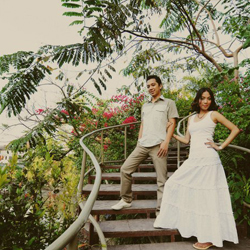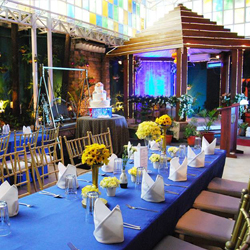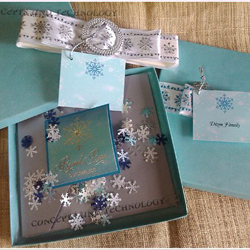Palawan – Philippine's Last Frontier
It is the country's last frontier because it is the last unsettled area in the whole archipelago. Several islands in Palawan are unexplored and uninhabited.
Composed of 1,780 islands and islets, rocky coves, and white sand beaches, Palawan has become one of the premier destination in the Philippines. It offers an array of activities such as island hopping, scuba diving, snorkeling, and swimming. Aside from this, the province serves as the undisturbed sanctuary of various marine and terrestrial animals, thus making it the biggest natural wildlife reservation area in the country.
Demographics
1. Population –
682, 152 (as of 2007 Census)
2. Land Area – 14, 649.7 sq. km
3. Capital – Puerto Princesa City
4. Language/Dialect – Tagalog, Cuyunin, Pinalwan,
Ilongo, English, and Filipino
5. Divisions
Cities (1)
- Puerto Princesa City
Municipalities (23)
- Aborlan
- Agutaya
- Araceli
- Balabac
- Bataraza
- Brooke's Point
- Busuanga
- Cagayancillo
- Coron
- Culion
- Cuyo
- Dumaran
- El Nido (Bacuit)
- Kalayaan
- Linapacan
- Magsaysay
- Narra
- Quezon
- Rizal (Marcos)
- Roxas
- San Vicente
- Sofronio Española
- Taytay
Famous For ...
Tubbataha
Reef
A declared UNESCO World Heritage Site, it is an atoll
coral reef that serves as the habitat for over 1,000
marine species, many of which are considered as endangered.
Puerto Princesa
Subterranean River National Park
Another UNESCO World Heritage Site boasts of its navigable
8.2 kilometer underground river, rich flora and fauna,
and unique stalagmite and stalactite formations.
El Nido
Marine Reserve
Occupying an area of 96,000 hectares, this popular nature
spot boasts of diverse ecosystems such as rain forest,
mangroves, white sand beaches, coral reefs, and limestone
cliffs.
Tabon Cave
Dubbed as the 'Cradle of Philippine Civilization”,
remains of the 22,000 year-old Tabon Man and his tools
were f discovered by Dr. Robert B. Fox and his team
from the National Museum of the Philippines in 1962.
Dugong (Sea
Cows)
This endemic creature is the only known herbivorous
mammal in existence today. It has a fusiform body with
no dorsal fin or hind limbs, instead possessing paddle-like
forelimbs used to maneuver itself. It is easily distinguished
from the manatees by its fluked, dolphin-like tail,
but also possesses a unique skull and teeth.
Cultural
Tabon Cave
Location: Lipuua Point, Quezon, Palawan
Known as the “Cradle of Philippine Civilization”,
Tabon Cave served as the primitive dwelling place of
the first residents of Palawan. Dr. Robert B. Fox and
his team from the National Museum of the Philippines
found bones and ancient utensils and tools used by the
'Tabon Man' . The complex has 29 explored caves, but
200 caves are known to exist on Lipuun Point. The cave
was named after the "Tabon Bird" (Tabon Scrubfowl,
Megapodius cumingii), which deposited thick hard layers
of guano during periods when the cave was uninhabited.
Tabon Museum
Location: Quezon, Palawan
Before heading out to the Tabon Cave, visitors head
out to the museum for a short lecture on the archaeological
artifacts found in the cave as well as the ethnology
of the tribes of Palawan. The museum houses some of
the artifacts found in Tabon Cave.
Batak Tribal
Community
Location: Brgy. Tagabinet, Puerto Princesa City, Palawan
Brgy. Tanabag, Puerto Princesa City, Palawan
Brgy. Concepcion, Puerto Princesa City, Palawan
Brgy. Langogan, Puerto Princesa City, Palawan
Several barangays in Puerto Princesa serves as the settlement
areas of the Batak tribes. They are of Negrito stock,
and since only less than 500 of them thrive today, they
are considered a ""disappearing people.
Palawan
Museum
Location: Old City Hall Building, Rizal Avenue, Puerto
Princesa City, Palawan
Other archaeological finds from Tabon Cave are located
her as well as those found in the town of Cuyo. The
museum is also provided with a library where books on
Philippine and Palawan history.
Historical
Puerto de
Sta. Isabel (Taytay Fort)
Location: Poblacion, Taytay, Palawan
It was constructed from 1667 to 1738 under the supervision
of the Augustinian Recollect friars. The fort served
as the stronghold and first line of defense of the town
against invading pirates. Cannons can be found at equal
distances.
Cuyo Fort
Location: Poblacion, Cuyo, Palawan
This Spanish fortress, completed in 1680, is considered
as one of the most ancient and unique forts in the Philippines.
Within its walls are the church, the convent, and the
only Perpetual Adoration chapel in Palawan.
Plaza Cuartel
Location: Puerto Princesa, Palawan
On December 14, 1944, when the news that the Liberation
forces has landed in Mindoro, the Japanese forces gathered
all 150 remaining prisoners of war in Palawan onto three
covered trenches which were then set on fire using barrels
of gasoline. Only 11 survived.
Japanese
Shipwreck dive sites
Location: Busuanga - Coron, Palawan
There are 12 WWII Japanese shipwrecks sunk on September
24, 1944 by US Navy action. They range in depth from
the surface to 40M. This large variety offers exciting
wreck exploration for enthusiasts, from novice divers
and snorkelers and recreational divers to experienced
divers.
- Irako (Japanese refrigeration ship)
- Okikawa Maru (Japanese Tanker)
- Akitsushima (Japanese seaplane tender)
- Kogyo Maru (Japanese freighter)
- Olympia Maru (Japanese freighter)
- Taiei Maru (Japanese oil tanker)
- Tirukaze Maru (Japanese submarine hunter)
- Japanese gun boat
- Skeleton wreck
Man-Made
Melville
Lighthouse
Location: Balabac Island, Palawan
It is one of the oldest yet functional lighthouses in
Palawan. This 100-year old lighthouse serves as guide
for international vessels which pass through the Balabac
Strait.
Port Miller
and Lighthouse Tower
Location: Brooke's Point, Palawan
Named after Sir James Brooke, the port is a cemented
water tank constructed as a source of potable water
for the natives and the settlers of the municipality.
Remains of the original lighthouse can still be seen
near the newly constructed lighthouse tower.
Iwahig Prison
and Penal Farm
Location: Brgy. Iwahig, Puerto Princesa, Palawan
This 37-hectare prison was originally set up in 1902
by the United States to house Philippine prisoners who
had fought against the American colonization of the
Philippines. Now, Iwahig is known as the only prison
of its kind where minimum security prisoners are involved
in livelihood activities and live in dormitories instead
of prison cells.
Palawan
Wildlife Rescue and Conservation Farm
Location: Brgy. Irawan, Puerto Princesa City, Palawan
Formerly known as Crocodile Farming Institute, this
crocodile sanctuary is managed by the Department of
Environment and Natural Resources -Protected Areas and
Wildlife Bureau. (DENR-PAWB). Inside the farm is a hospital
for sick and disabled crocodiles.
Calauit
Game Preserve and Wildlife Sanctuary
Location: Calauit Island, Busuanga, Palawan
Established on August 31,1976 by virtue of Presidential
Decree No.1578, It serves as a game reserve and wildlife
sanctuary of exotic African animals and endangered endemic
animals of Palawan.
Natural
Puerto Princesa
Subterranean River National Park
Location: Brgy. Bahile, Puerto Princesa, Palawan
This UNESCO World Heritage Site boasts of its navigable
8.2 kilometer underground river flows within a deep
cavern under rugged limestone and marble cliffs, special
features of the park. Within the hallowed recesses,
one winds through the tunnel aboard a paddle boat with
outriggers to be enthralled at every turn which reveals
stalactite pillars, rock formations, and domed amphitheaters.
Tubbataha
Reef
Location: Cagayancillio, Palawan
It was declared as a UNESCO World Heritage Site in December
1993. Over 1000 species inhabit in the reef; many are
already considered as endangered. Animal species found
include manta rays, lionfish, tortoise, clownfish, and
sharks.
El Nido Marine
Reserve
Location: Minloc Island, El Nido, Palawan
This 96,000-hectare marine reserve is the sanctuary
of diverse marine species, including the dugong (sea
cow). There several commercial resorts that offer trips
and underwater activities around the marine reserve
area.
Honda Bay
Location: Sta. Lourdes, Puerto Princesa City
Honda Bay is comprised of several islets with shallow
reefs bordering wonderful beaches which have become
the much loved swimming, snorkeling, and diving destinations
of local residents and tourists. These islets are the
- Cannon (Cowrie) Island
- Bat Island
- Lu-Ii Island (derived from the word ""lulubog-lilitaw"", meaning floating and sinking island, is visible only during low tide)
- Meara Marina
- Starfish Island (known for its fine white sand and clear water that teems with starfish)
- Snake Island (an island with a long stretch of fine white sand shaped like a snake)
- Pandan Island
- Senorita Island (the breeding site of lapu-lapu fish)
Religious
Immaculate
Conception Cathedral
Location:Brgy. Liwanag, Rizal Avenue, Puerto Princesa
City, Palawan
Fr. Antonio Muro initiated the creation of the chaple
where the first mass celebrated in Palawan was held
in 1872. It was almost a century later in 1961 under
the late Bishop Gregorio Espiga that the cathedral was
built. Its angular structure, different from most churches,
provides visitors an interesting glimpse of unconventional
religious edifice.
La Immaculada
Conception Church (Culion Church)
Location: Culion, Palawan
The church was first built in 1740 inside the Culion
Fort. Back then, the town was used as a leprosy segregation
camp. As the number of leper parishioners increased,
the church was enlarged in 1933, using parts of the
fort as foundation. The Parola ruins and a Spanish cannon
can still be seen at the church grounds.
Baragatan
Sa Palawan
Place: Puerto Princesa City, Palawan
Date: Third week of June
It is a celebration of the founding of the civil government
of Palawan. Festival highlights include trade fair,
garden show, float parades, street dancing, and beauty
pageant.
Tarek Festival
Place: Aborlan, Palawan
Date: Third week of January
The festival is observed by two ethnic tribes, the Tagbanuas
and Batak. For the Tagbanuas, it is a dance ritual comprising
the observance of the Pagdiwata. The Pagdiwata is a
ritual asking the gods to heal the sick. For the Batak
tribe, it is a form of war dance.
Purongitan
Festival
Place: Cuyo, Palawan
Date: August 28
Participants blacken their skin with soot and dance
with abandonment in the city streets to the frenetic
percussion of drummers. The event coincides with the
feast of the town's patron saint, San Agustin.
Kalabukay
Festival
Place: Dumaran, Palawan
Date: June 14 - 18
Kalabukay is the Cuyono word for Philippine Cockatoo
or “katala,” an endangered bird specie found
only in the country, most of which are in Palawan. The
festival is one form of promoting the conservation of
the forests of Dumaran where one of the last remaining
populations of Kalabukay or “katala” dwells.
By sea:
From Manila, Palawan can be reached by taking
a 20 hour ferry ride at Manila North Harbor, docking
at Coron Pier or Puerto Princesa Pier.
By Air:
Major airline have direct flight from Manila to
Palawan, landing at Puerto Princesa City Airport
Terminal. There are smaller airstrips found in
Busuanga (Francisco B. Reyes Airport), and Cuyo
(Cuyo Airport). Travel time is 1 hour and five
minutes






